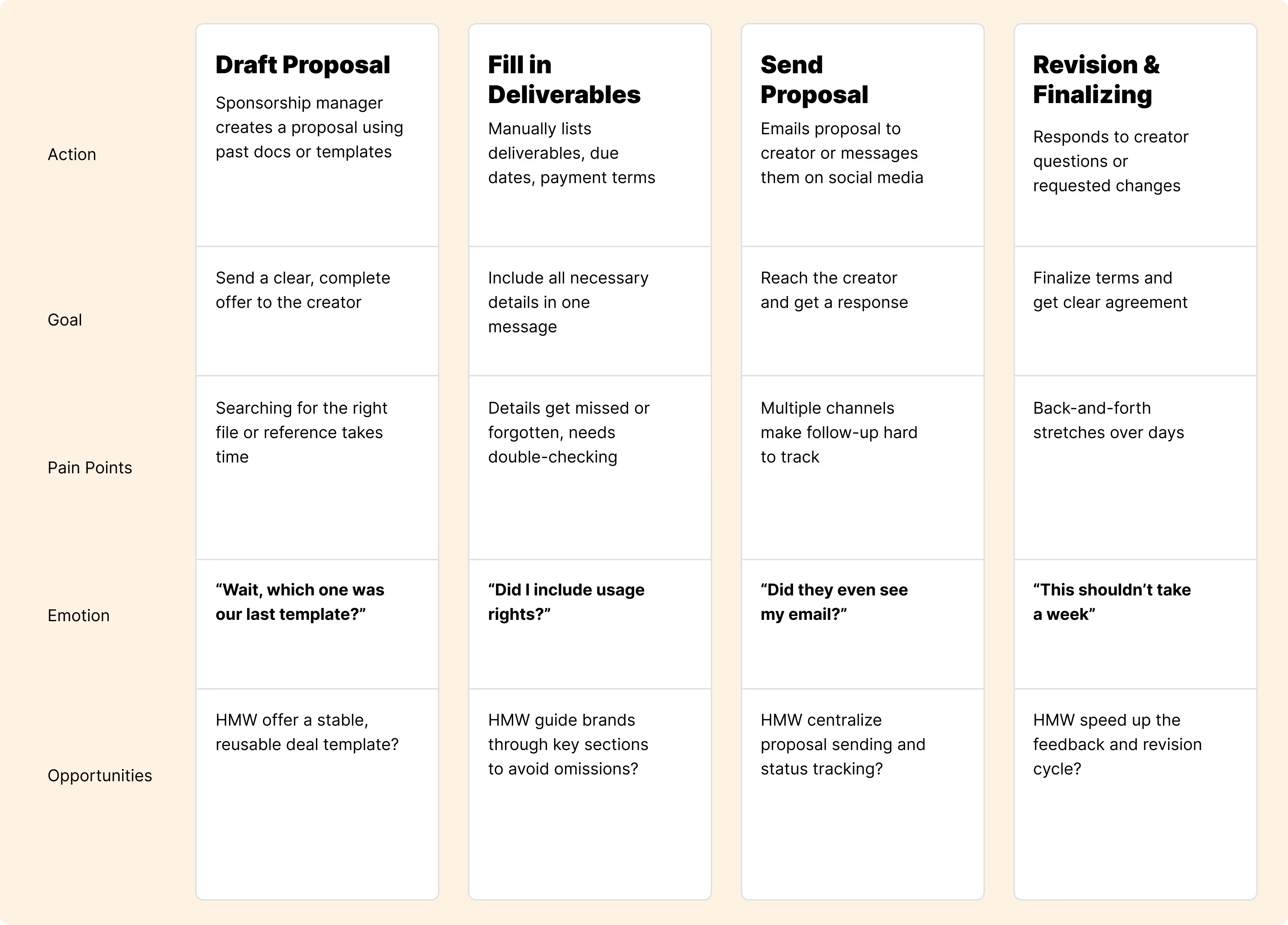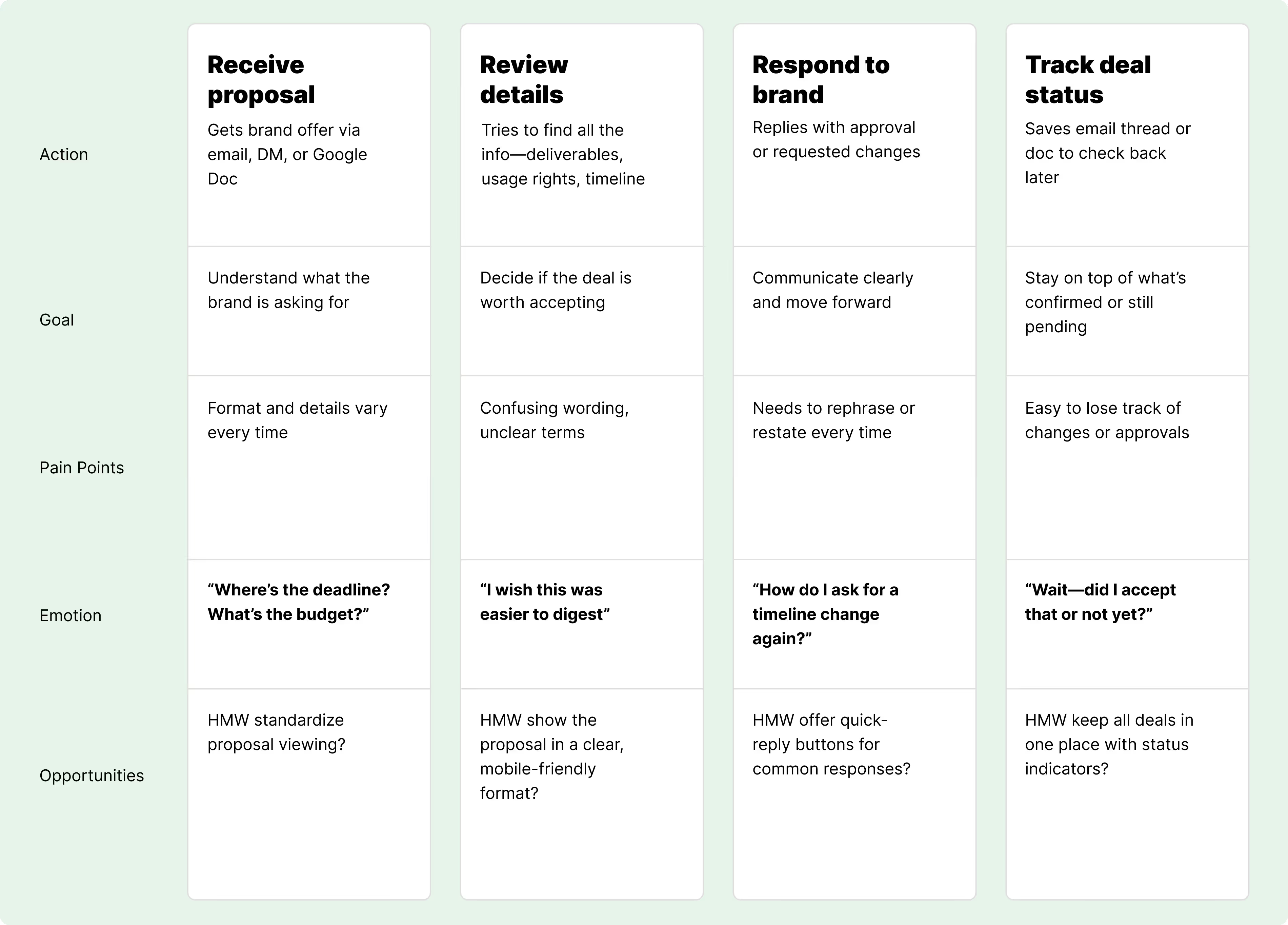Ollio Sponsorship Management
Sponsorship management made simpler for brands and creators.
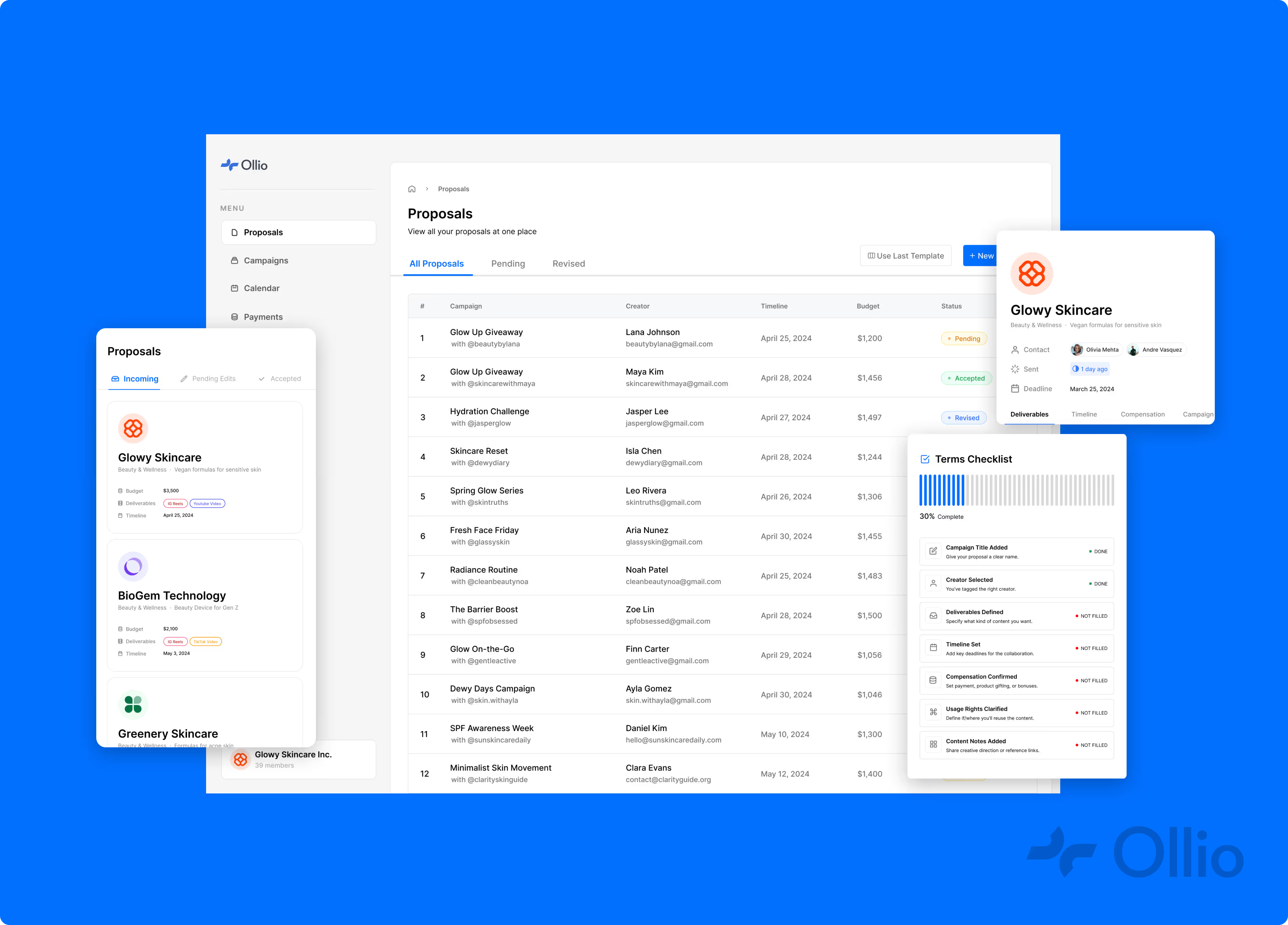
Client
Ollio
Role
Product Designer
Team
1 Product Manager
5 Developers
1 Designer
5 Developers
1 Designer
Timeline
May 2024 - August 2024
(4 Months)
(4 Months)
Project Context
Ollio is a startup that wants to create a platform that serve brands and creators to easily manage sponsorship deals.
Problem
Brands and creators rely on scattered email threads, shared docs, and inconsistent communication to manage sponsorship deals, making the process time-consuming and unorganized.
Goals
Ollio needs a platform that simplifies creating sponsorship proposals for brands and managing deals for creators.
Solution
A deal-tracking mobile application for creators &
a sponsorship management web dashboard for brands.
For Brands
Proposals Made Simple
· Manage all sponsorships in the format that all marketers have known and love - Excel table
· Use a deal template to skip repetitive setup and ensure all key terms are included.
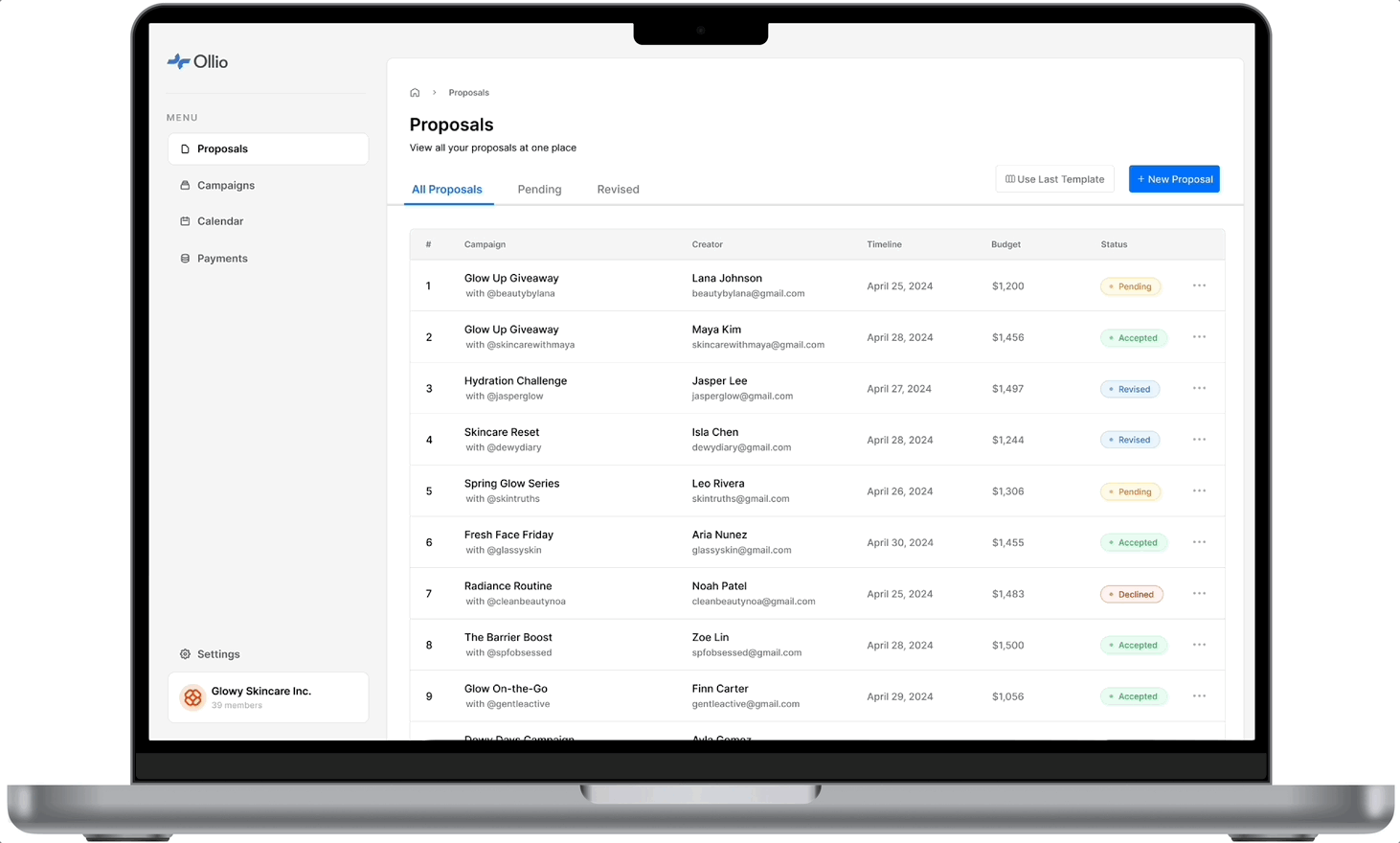
For Creators
Simplified Proposals, Smarter Actions
· View proposal in a mobile-friendly layout with clear breakdowns of terms.
· Use quick reply options to keep things moving fast.
· Use quick reply options to keep things moving fast.

User Interviews
I conducted interviews with 2 brand managers and 3 creators to understand the current workflow and pain points.
Through these conversations, supported by personas and journey mapping, I uncovered key behavioral patterns that contribute to the time-consuming, fragmented nature of dealmaking.
Brands
Ideation Workshop
Based on the pain points and goals we uncovered, I identified four key opportunity areas and translated into How Might We prompts to guide the ideation process.
Brands
How might we help brands reuse past proposals to avoid starting from scratch and ensure every proposals aren't missing critical information?
Creators
How might we make it easier for creators to review and respond to proposals?
To turn insights into features, I led an ideation session with my PM and two engineers.
Using the “How Might We” framework, we ran a modified Crazy 8s to sketch ideas, then prioritized them using an impact-effort matrix—laying the groundwork for key solutions on both the brand and creator sides.
Using the “How Might We” framework, we ran a modified Crazy 8s to sketch ideas, then prioritized them using an impact-effort matrix—laying the groundwork for key solutions on both the brand and creator sides.
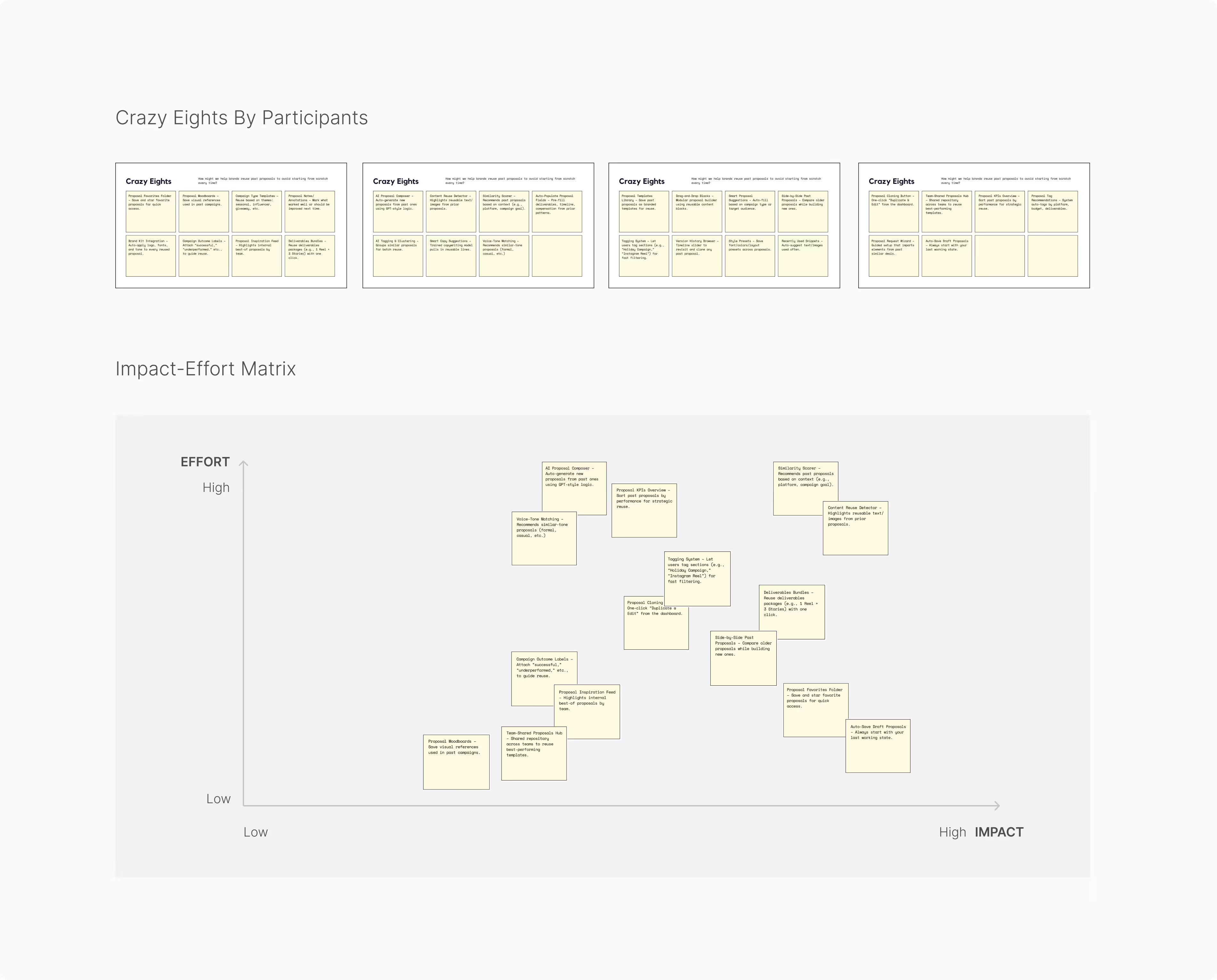
Design
Major Design Decisions
For Brands (Web)
Start From Template
Placing a “Start from Template” button next to “New Proposal” gives brands quick access to their most recently used deal format. Showing the last-edited timestamp helps reduce second-guessing and speeds up setup.

Dynamic Checklist
We added a real-time checklist to the proposal form that updates as each section is filled out. This gives brands peace of mind before hitting “Send,” while preventing small oversights from turning into bigger issues.
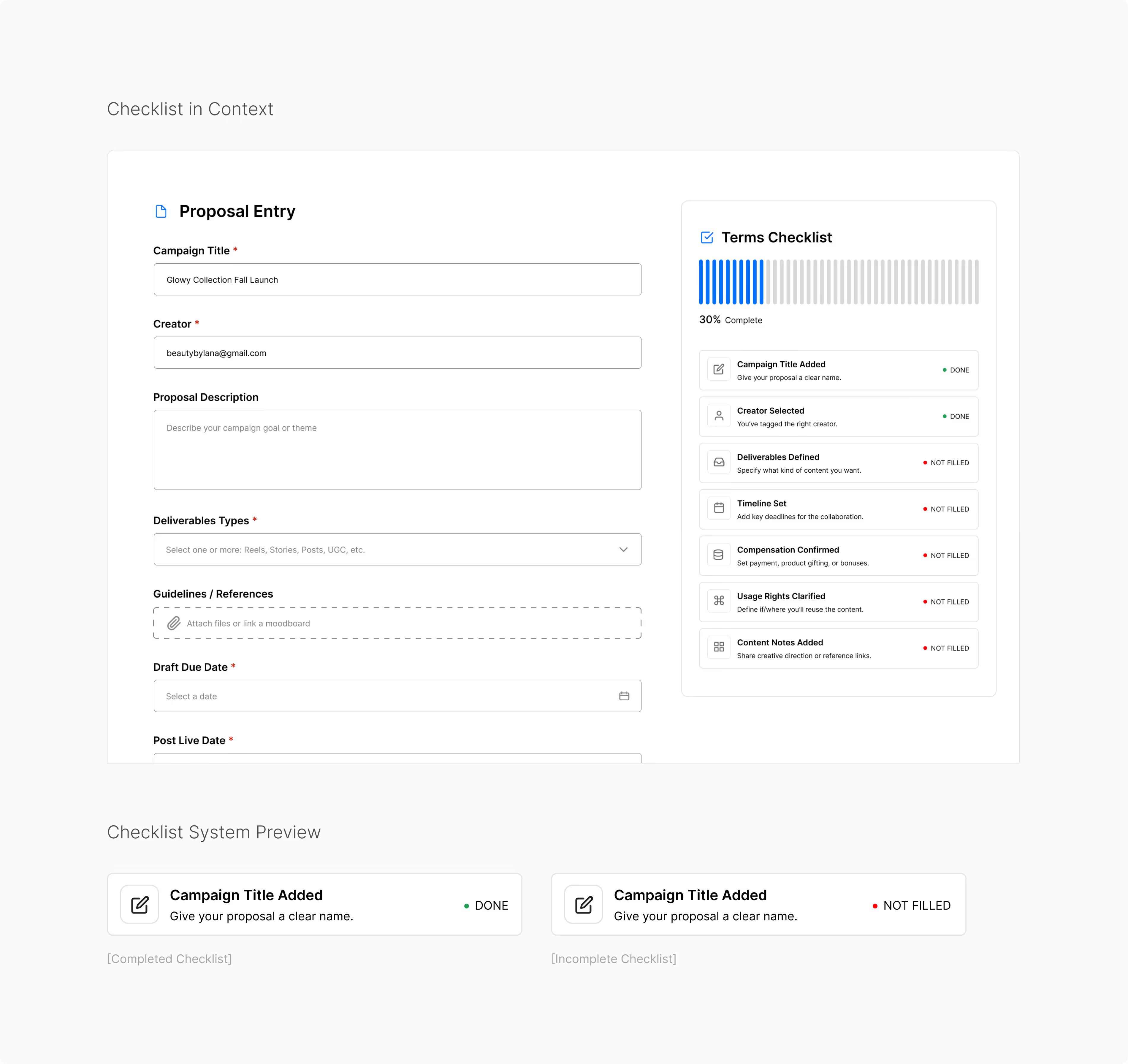
For Creators (Mobile)
Clearer Terms Up Front
We surfaced the most important information at the top of the section in large type. Bold headers help creators understand expectations at a glance.
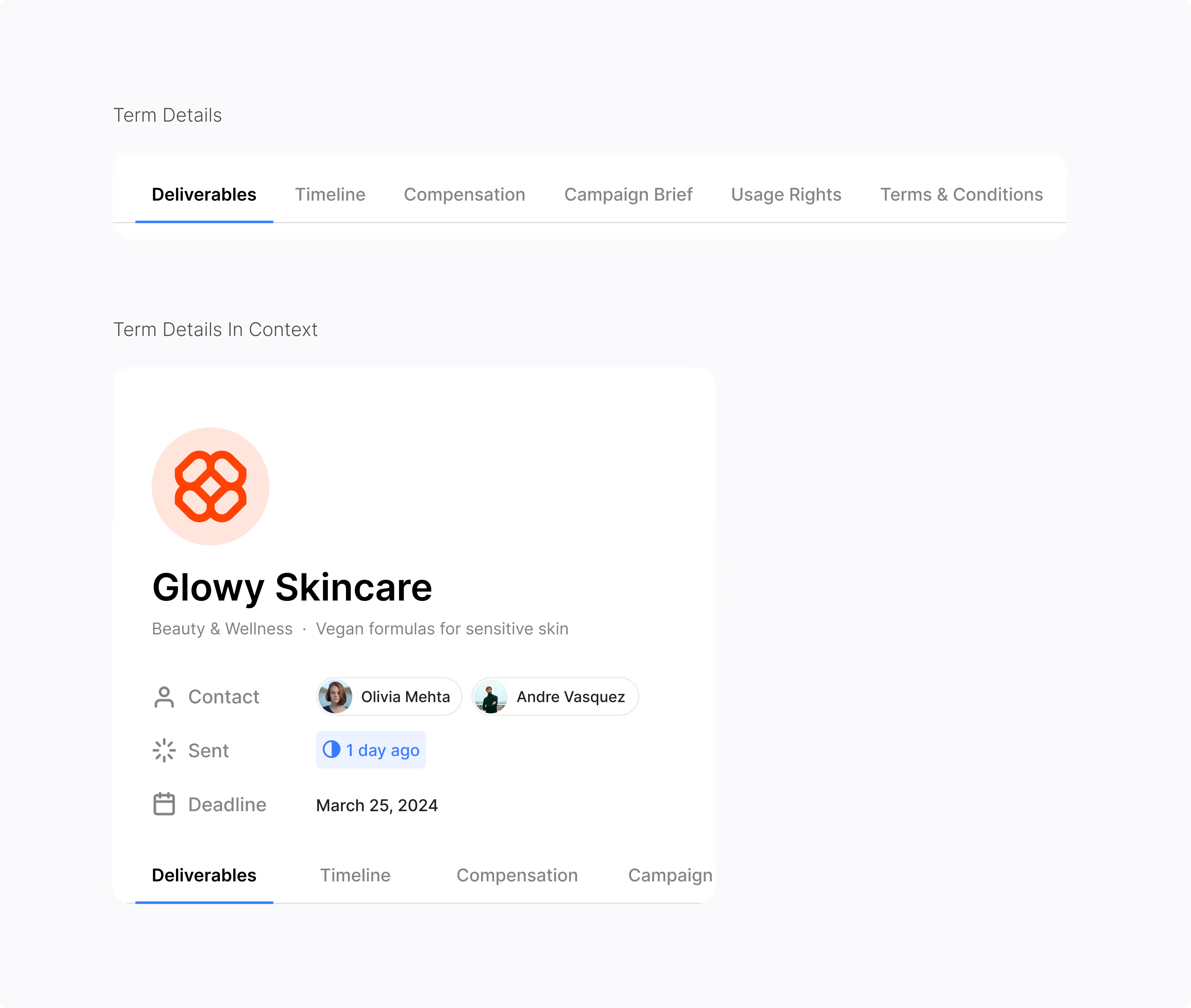
Visual Status Tracking
We designed a tabbed inbox with clear categories: Incoming, Pending Edits, and Accepted. Each proposal card displays a color-coded status pill, keeping everything organized and visible in one place.

One Tap Responses
To simplify this, we added fixed action buttons—Accept, Request Edits, Decline—anchored at the bottom of the screen. This allows creators to act quickly without scrolling back up, even on mobile.

User Testing
I conducted 4 user testing sessions with 2 brand managers and 3 session with 2 creators, and made design changes accordingly.
Iteration
The bubble-style tabs felt like filters, not a progress flow. So we switched to line-style tabs to show each tabs are part of a sequence.
Line-style tabs gave creators a clearer sense of progression and helps reduce confusion around next steps.

Feedback

Reflection
Learnings
Overall, I’m proud of how I identified key workflow pain points and delivered solutions that simplified decision-making on both the brand and creator sides. If I were to revisit this project, I would be more mindful to:
Matching visual patterns to mental models
I realized how important it is to choose interaction patterns that not only look good, but align with how users naturally think about their workflow. Even subtle design choices can either reinforce or disrupt a user’s understanding of a process.
Designing for scale, not just clarity
Some design choices felt clean and intuitive at first, but didn’t hold up when used at scale. I’ve learned to think beyond visual simplicity and consider how layouts perform when there’s more data, more users, and more complexity.


